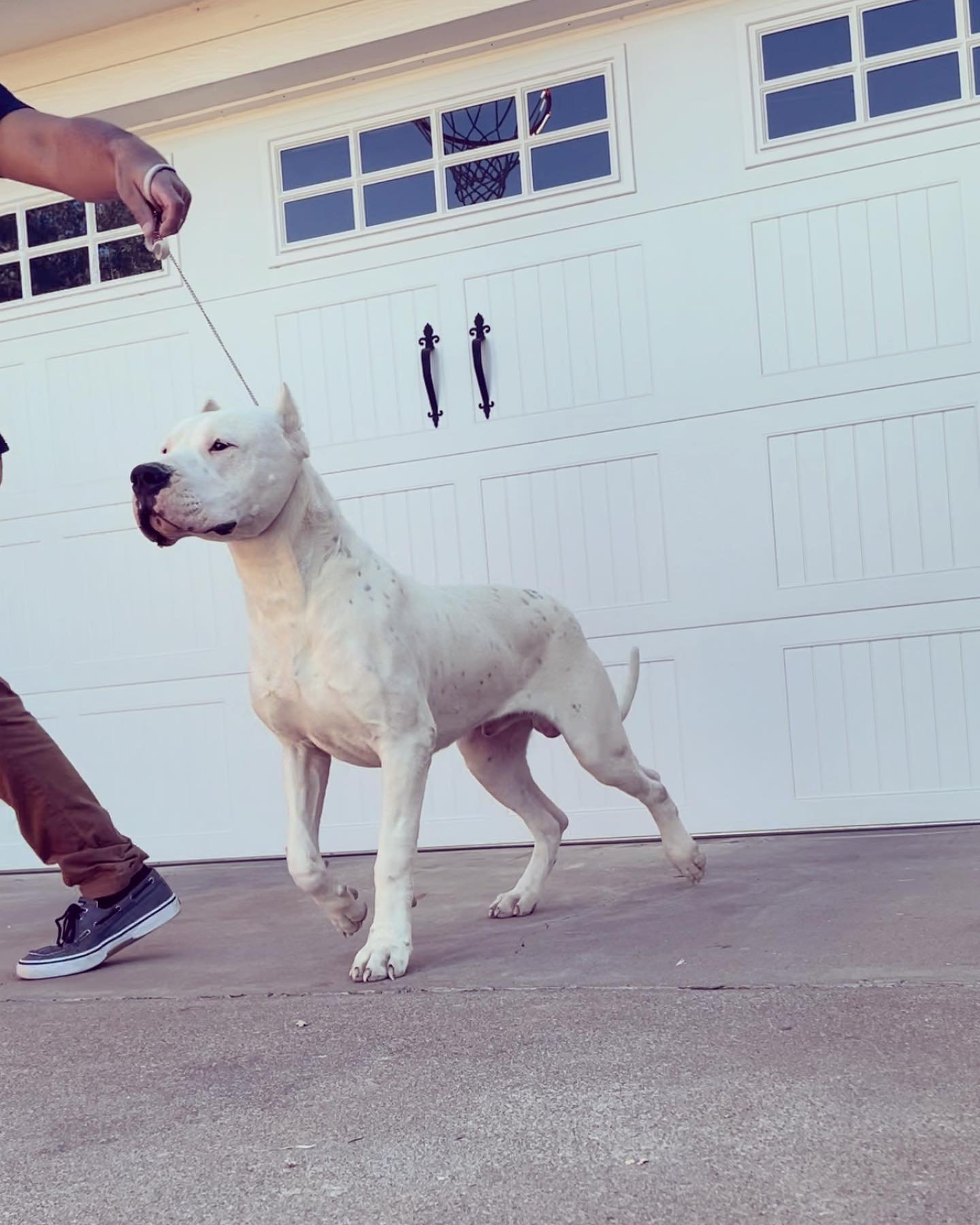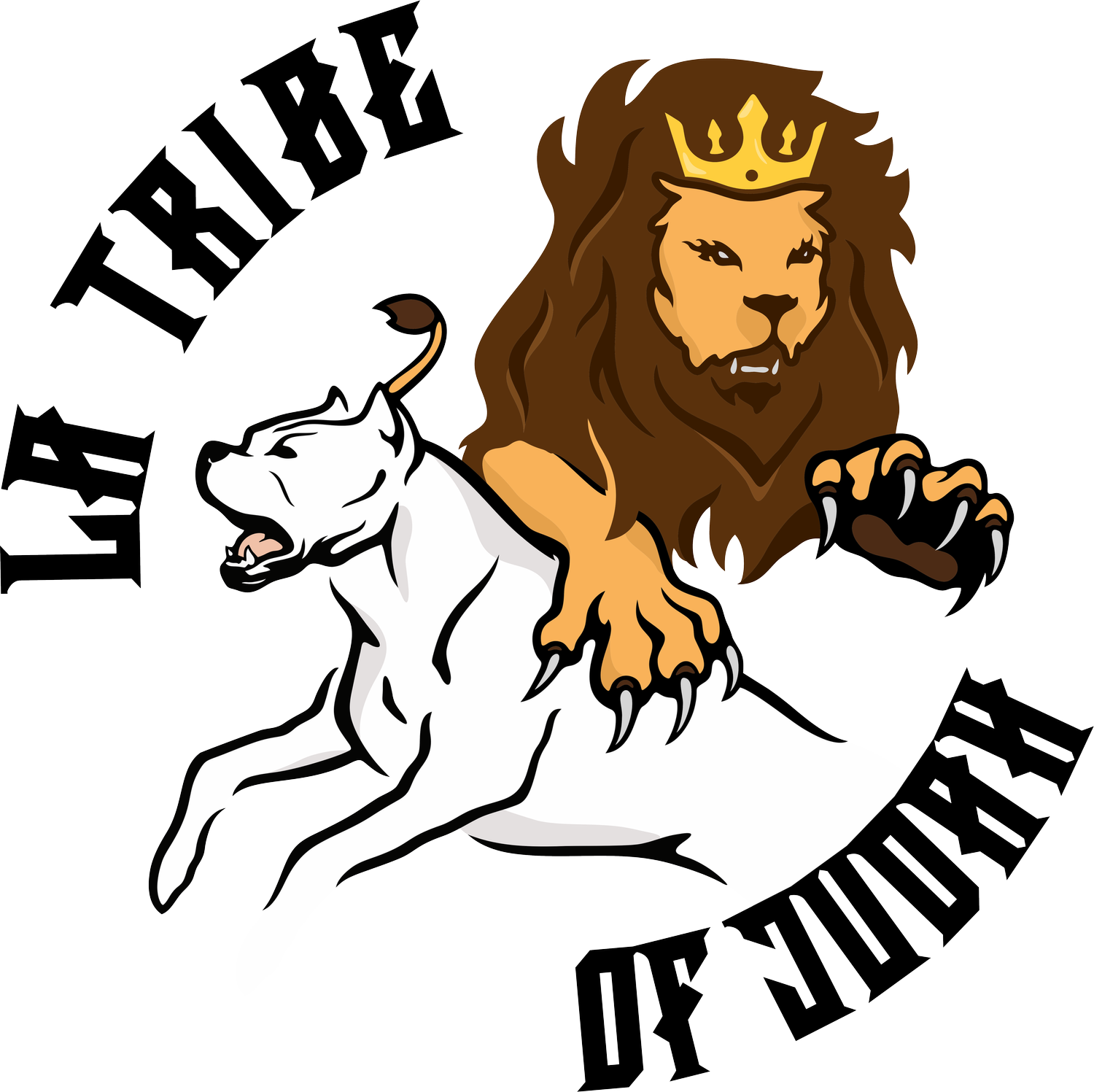
A Lion is in the heart of every brave Dogo
---------
A Lion is in the heart of every brave Dogo ---------
New Products
About the Dogo Argentino
Origin: Argentina.
Utilization: Big-game hunting dog.
FCI-Classification: Group 2 Schnauzer and Pinscher, Molossians and Swiss Mountain- and Cattledogs.
Section 2.1 Molossian, Dogue type. Without working trial.
FCI N° 292
Life Expectancy: 9 - 15 years.
Coat Type: Smooth.
Coat Color: White, a dark patch on the head is permitted as long as it doesn't cover more than 10% of the head.
Coat Length: Short
This breed is native to the province of Cordoba, in the Mediterranean region of Argentina. Its creator was Dr. Antonio Nores Martinez, a prominent and active surgeon (1907 – 1956). His work was based upon the methodical crossbreeding of the “Old Fighting Dog of Cordoba”, a breed of great power and strength, which was the product of crossbreeding among dog of the breeds Bulldogs and Bull Terriers. He selected completely white dogs for breeding, not undershot, with heavy heads and long muzzle. After a thorough and minute character study and selection, through different generations, his aim was accomplished forming different families always using as a start the Old Fighting Dog of Cordoba which was crossed at first with English Bull Dog, Great Dane, Pyrenean Mastiff, Bull Terrier, Boxer, Pointer, Dogue de Bordeaux and Irish Wolfhound. In 1947 the breed was already created and its genotype and phenotype were stabilized. The same year the breed standard was presented at the Hunter’s Club in the City of Buenos Aires. Its strength, tenacity, sense of smell and bravery make it the best in the pack of dogs to hunt wild boars, peccaries, pumas and other predators of agriculture and livestock that inhabit the vast and diverse regions of Argentina. This is the traditional activity for which Antonio Nores created this breed. In 1964 it was recognized as a breed by the FCA (Federación Cinologica Argentina) and the Sociedad Rural Argentina, which opened their studbook to initiate registry. Just in 1973 the breed was accepted by the FCI. This was possible thanks to the great passion and unique work and effort of Dr. Agustín Nores Martínez, brother of the founder of the breed, who achieved this recognition not only because of his individual actions but also from the institutional action of the FCA and the Dogo Argentino Club “Dr. Antonio Nores Martinez”.
Frequently Asked Questions
-
Are you trying to find a Dogo Argentino Kennel in the United States?
Developing a relationship with a trusted breeder is key. Even before a litter is born a potential buyer should already have done research and have extensive knowledge about the Dogo Argentino and the needs for raising a Dogo pupppy. With that information they can ask the Dogo Breeder questions and start developing a relationship or an understanding about the breeders program.
-
People often ask what is the price for a Dogo Argentino puppy?
Asking for the price of a Dogo pup shouldn’t be the first question to ask a responsible Breeder. This first question automatically gives a responsible breeder a bad taste. There are more important first questions that should be asked such as temperament, health testing, lineage, information about the parents etc.
-
How often does La Tribe of Judah take the Dogo pups to the Vet?
We see a veterinarian at birth if need, 3 weeks old, 6 weeks old and 9 weeks old routinely. Any other time as needed or when we have a concern. All puppies go home with a currently completed health certificate, BAER certificate, microchip, UTD on shots, dewormed, registered along with a medical record of everything ever given or done.
-
How are the puppies socialized?
We socialize with people and children daily from birth. When old enough, the puppies follow us around the yard. After shots, they start taking day excursions with us. I utilize the following enrichment methods: Various Surfaces , Strangers, Structures, e.g. Climbing, Chew, e.g. Bone, Toys, e.g. Ball, Touch Desensitization, Early Neurological Stimulation, Grooming Desensitization, Household Desensitization, Sound Stimulation, Socialized with Other Animals, Socialized with Adult Dogos, Socialized with Children, Human Interactions , "No" Biting or Chewing.
-
What is BAER Testing and why is it important to be done on a Dogo Argentino?
Brainstem auditory evoked response (BAER) testing is an electro-diagnostic test used to evaluate the hearing of dogs, cats and other domestic animals. It evaluates the components of the external ear canal, middle/inner ear cavities, cranial nerve and selected areas of the brainstem. It doesn’t matter if both grandparents and parents had full hearing, any pairing can still throw a unilateral ( one good ear and the other bad ) or a deaf hearing puppy. A Dogo can have full hearing and still carry the gene which in turn can lead to throwing a unilateral or deaf pup. This is why its important to have your Dogo tested by an unbiased Vet that can provide a BAER test certification that matches the pups microchip. The BAER test doesn’t tell you if the Dogo is a carrier of the gene, but it atleast gives you a better understanding the how the Dogo pup hears. They BAER test on a puppy can be done by 6 weeks of age.
-
People often ask, “ Do Dogo Argentinos shed “?
Short answer is Yes! More so mid sized pups up to adult Dogos tend to shed. Dogos are not Hypoallergenic dogs ( non shedding ). Please make sure and understand that you might be littered with Dogo glitter if you get one, we do not want a pup to loose its home because of an issue this might cause. Some Dogos shed more or less then others.
-
Does the Dogo Puppy come with a Health Guarantee?
We offer a 1 year health guarantee. Our health guarantee covers genetic defects.


